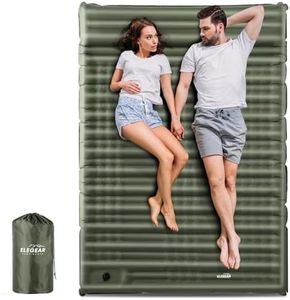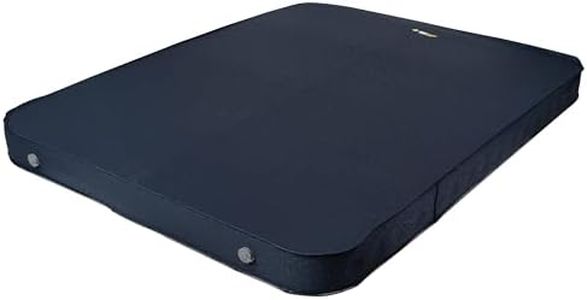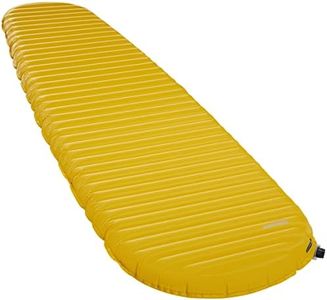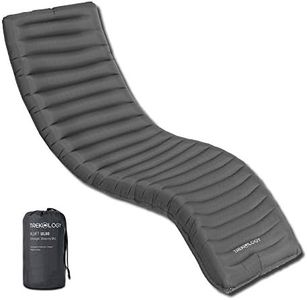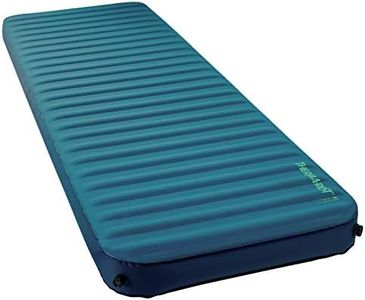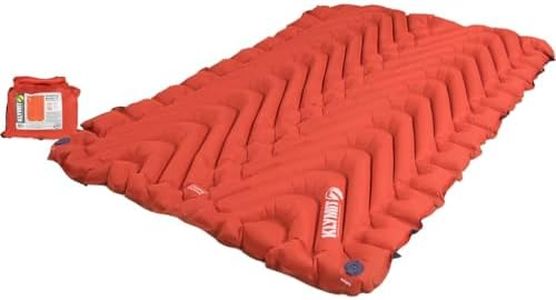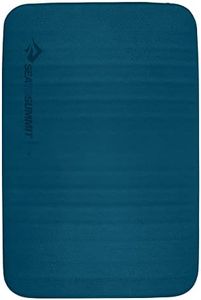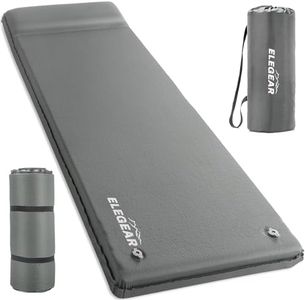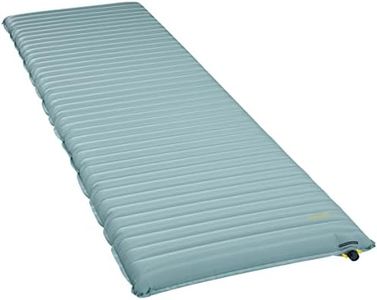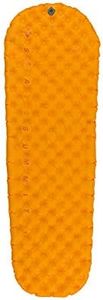We Use CookiesWe use cookies to enhance the security, performance,
functionality and for analytical and promotional activities. By continuing to browse this site you
are agreeing to our privacy policy
10 Best Sleeping Pad For Side Sleepers
From leading brands and best sellers available on the web.Buying Guide for the Best Sleeping Pad For Side Sleepers
Choosing a sleeping pad as a side sleeper is all about finding the right balance between comfort, support, and portability. Since side sleepers tend to put more pressure on certain parts of their body, like the hips and shoulders, it’s important to focus on pads that offer enough cushioning and insulation while also being easy to carry and set up. Understanding your sleeping style, usual camping conditions, and comfort preferences will help you find the perfect sleeping pad.ThicknessThickness refers to how deep the pad is from top to bottom when it's fully inflated or expanded. This is especially important for side sleepers, because more thickness means more cushioning for your hips and shoulders. Pads usually range from less than 1 inch to 4 inches or more. Thinner pads (under 2 inches) are more compact but might feel hard when lying on your side, while thicker pads (2.5 inches and above) provide more comfort but can be bulkier. For most side sleepers, a pad in the 2.5-4 inch range is often ideal for keeping your body comfortably supported and off the ground.
Type of Pad (Foam, Self-inflating, Air)Sleeping pads come in different types: closed-cell foam, self-inflating, and air pads. Foam pads are lightweight and durable but generally fairly thin and firm, which may not be enough for side sleepers. Self-inflating pads offer a mix of foam and air, providing moderate comfort and insulation. Air pads use air pockets for cushioning and can be much thicker, making them a comfortable choice for side sleepers, though they require inflation and may be more prone to punctures. If you need the most cushioning for your hips and shoulders, air pads or thicker self-inflating pads are usually the best options.
Insulation (R-value)R-value measures a sleeping pad's insulation—the higher the number, the better it keeps you warm. This is key if you expect cool nights or often camp in colder locations. Pads with R-values below 2 are mostly for warm-weather use, values between 2 and 4 are suitable for three-season camping, and values above 4 are best for cold-weather use. If you often feel cold or camp in varied temperatures, choose a pad with a higher R-value. For general, three-season side sleepers, an R-value around 3 or higher offers good versatility and warmth.
Width and LengthA sleeping pad’s dimensions will impact your overall comfort, especially as a side sleeper who may bend knees or switch positions. Standard widths are about 20 inches, while wider pads (25 inches or more) give more room for movement. Length should match your height, with regular pads fitting people up to about 6 feet and longer ones for taller campers. If you toss and turn, or just want more space, a wider pad can prevent you from feeling like you’ll roll off in the night.
Surface Texture and Baffle DesignThe texture and design of the pad’s surface can change how it feels and how stable you are during sleep. Some pads have horizontal or vertical baffles (the raised sections), and others have quilted designs. These influence how much the pad cradles your body and keeps you centered. Side sleepers can benefit from a pad that has a softer top or deeper baffles, which help cushion pressure points and keep your body more stable during the night.
Weight and Packed SizeWeight and packed size determine how easy the pad is to carry and fit into your backpack or bag. Lightweight and compact models are great if you’re backpacking, but sometimes they sacrifice a bit of comfort. Heavier and bulkier pads may offer more cushioning and warmth, but are best if you’re car camping or don’t need to carry gear far. Match the pad’s weight and size to your style of trips—if you prioritize comfort and don’t mind extra weight, you can go for thicker or larger models.
